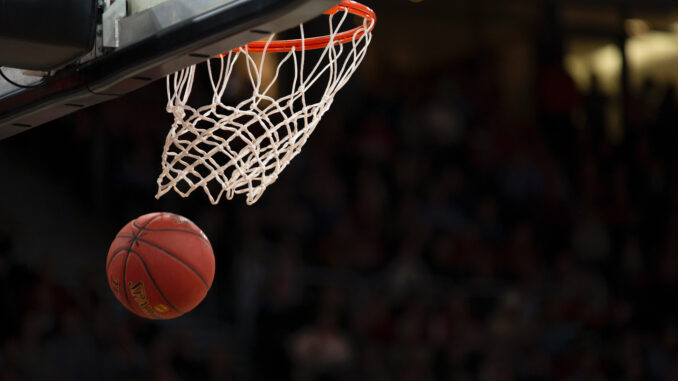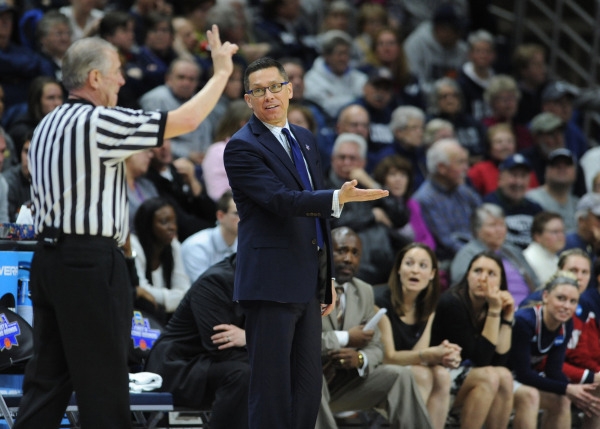
by Peter Boettger
A core memory I had of high school was the countless times my then-basketball teammates would trash talk the girl’s basketball team. They would say things along the lines of: “Oh I would score 50 points on the girl’s team;” “If I was a girl, I’d basically be girl-Shaq;” or “Their games are so boring.”
More importantly, I’ll always remember one day on the bus when my JV coach told the team not to disrespect those players. “Even though they might be built differently, basketball is basketball, so we should treat them like they’re our teammates.”
I didn’t hear any slander about the girl’s basketball team in the two years of high school basketball after that.
However, I’ve worked both men’s and women’s basketball this year, and I’ll guarantee you that fewer people here care about the women’s team than the men’s team. According to Duquesne’s athletics’ website, the average attendance for the men’s team is 1,984; for the women’s team, the average is 789.
Despite the approximate 22% difference in attendance, the women’s team is outperforming the men’s team in certain statistics.
But to be transparent, my opinion isn’t that the women’s team is better than the men’s team — it is that the women’s team is performing better against their own competition than the men’s team and their competition.
The women’s team should get the same amount of respect from the fans — and the university — as the men’s team, and hopefully, these stats will raise interest in attending the next women’s basketball team.
The first thing to address is some stats for both teams, and compare their percentile across the NCAA.
On the offensive side of things, the first stat to cover is true shooting percentage, which is dividing all the made shots from all attempts from anywhere on the court, including free throws. The men’s team has a true shooting percentage of 50.5%, the women’s team has a slightly lower percentage of 49.7%; however, the men’s team is only better than 14% of men’s teams, while the women’s team is overall shooting better than 55% of all the Division 1 women’s teams, according to CBB analytics.
Another category is ball movement, meaning assists. The women’s team is in the 89th percentile in assist percentage and 63% of their shots are generated by an assist. As for the men’s team, they’re in the 3rd percentile for the same stat and only 40.8% of their shots are assisted.
As for defensive stats, the first thing to look for is defensive rating, or points allowed per 100 possessions. The men’s current rating is 106.2, while the women’s rating is 92.1 points. While the women’s team seems to be allowing fewer points, they’re both around the same success rate, being a game or two below a record that meets .500.
But we shouldn’t only focus on the team as a whole, we should also look at the players.
The first player to bring to the forefront is Tess Myers, Duquesne’s biggest perimeter threat. She’s averaging 3/7 from the three-point line this season, and no one on the men’s team is averaging more than 2 threes a game. To add onto that, she has the potential to put her name in the record book for most threes made in a single season.
With 16 games left, if she keeps up average for those games, she would make 48 threes, adding that to her current total of 36 threes, that is 84 threes made. Tying the third-place record of most threes made in a season.
Another player to mention is guard Megan McConnell: Duquesne’s leader in assists and rebounds, averaging 4.3 assists per game and 6.2 rebounds per game. While both Kevin Easley and Tre Williams are averaging around six rebounds too, no one on the men’s team is averaging more than 3 assists this season.
Both teams have six wins under their belt this season, though the women have played and lost more games, as of Jan. 11. The next game for the men’s team will be Jan. 15 vs. Dayton at 12:30 p.m., and for the women’s team, Jan. 19 vs. Rhode Island at 7 p.m..
The women’s team is just as much of an athletic threat as the men’s team. They put in the same amount of work, they represent Duquesne on the court with the same effort and, most importantly, inclusion should be important to the Duquesne fanbase.
The success of our basketball teams is something worth looking out for, because at the end of the day, basketball is basketball.




